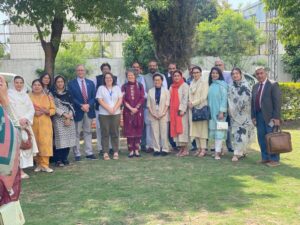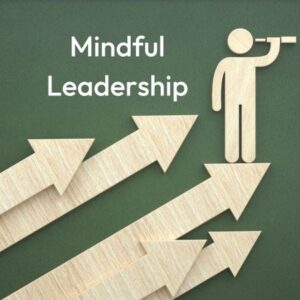With the onslaught of mostly distressing news about the COVID-19 pandemic,
it is natural to find it challenging to relax and keep calm. Fear and anxiety can get overwhelming amidst the uncertainty and disruption of normal life. To cope, we sometimes tell others and ourselves to “stay calm”. But in times like these, it is understandably easier said than done. This is because calming down takes skills.
The good news is that with practice, skills can be developed and nurtured. The more we use a skill, the more we can master it.
In Space Calm, a mindfulness-based group program for children and teens, participants learn specific life skills they can use to cope with strong emotions such as anxiety, fear, anger, sadness, and loneliness. These are the PEACE skills: Presence, Emotional awareness and understanding, Acceptance, Compassion, and Engagement with others.
Adults and youth alike can benefit from practicing these skills during this challenging time. This could even prove to be the best time to build a skill or two, as you would have even more motivation to manage unpleasant emotions. So, take a look and invite your loved ones – both young and old – to join you in practicing and cultivating these skills.
P – Presence
This is the skill of bringing one’s full attention to what is in the moment. This is a key aspect of mindfulness practice. There’s extensive research evidence in the past 40 years of the many benefits of mindfulness on health and wellbeing. For one, mindfulness practice has been shown to increase resilience to stress and burnout. There have also been significant reductions in attention, behavioral, and anger problems, as well as decreased symptoms of depression and anxiety among youth who practiced mindfulness.
Cultivate the skill:
- Five senses – Our senses are the entry point to the present moment. Pause and, without judgment or evaluation, simply notice: 5 things you see; 4 things you can feel on your skin; 3 things you can hear; 2 things you can smell; and 1 thing you can taste at this precise moment in time. (This can be fun to do with others. Take turns in sharing what you’ve become aware of through your senses.)
- Mindful activity of daily living – Choose one daily activity that you intend to do mindfully everyday during the week (e.g., brushing your teeth, eating breakfast, combing your hair, taking a shower, etc.). Every time you do this routine activity, focus your full attention on it. If you get distracted, notice what distracted you and then gently bring your attention back to what you are doing. Notice the body sensations and emotions you feel during this “simple awareness” exercise.
- Mindful eating – Choose a small piece of food to eat mindfully (examples: a raisin, a bite-sized chocolate, or a small piece of cookie) and place it on your palm. Focus on it and observe its shape, color/s, and other details you can see. Pay attention to how it feels on your skin; turn it over or around slowly and notice its texture. Slowly put it close to your nose and savor its smell. Place it gently inside your mouth and let it sit on your tongue for a while. Notice what’s happening inside your mouth. Savor the taste that’s coming out from this small piece of food. Then, move it with your tongue and slowly bite it with your teeth. Notice the flavors oozing from it. As you swallow slowly, let your attention dwell on your throat and the sensations you feel there. Once you’re done, take a few moments to observe how you feel.
(You may also check out this video of children demonstrating how to eat more mindfully)
E – Emotional awareness and understanding
This is the capacity to be aware of emotions and be comfortable with any emotion without needing to avoid it or indulge it. This skill allows individuals to calmly recognize emotions with openness and curiosity, with the wise understanding that emotions come and go.
Cultivate the skill:
- Name the emotion – Take several pauses a day to check what emotions are there in the moment. Recognize each one. Still yourself when you feel the need to push a feeling away. Allow yourself to sit with the emotions for a minute or two.
- Feel the emotion – Check where in your body you feel the emotion. For instance, where do you feel the anxiety – your head, chest, or tummy? Focus on the body sensation for a minute.
- Draw the emotion – Draw an image to represent what you are currently feeling. For those of you who have kids, invite them to do this with you. Then, take turns in talking about the emotion. You can even make it a game and guess what emotion each image represents! (Just one rule: No one makes a judgment about the person or the emotion being felt.)
A – Acceptance
This is the skill of being at peace with what is being experienced in the moment. When we resist what is (e.g., fear, sickness, boredom, etc.), we create more suffering because fighting what is in the here and now is a losing battle. (It is already here!)
“Suffering equals pain times resistance.”
Shinzen Young, a mindfulness teacher and neuroscience research consultant
What creates the suffering is the thought that the pain, discomfort, or unpleasant emotion shouldn’t be here (i.e., non-acceptance of what’s here).
Cultivate the skill:
- Smile at it – List down 5 things you’re struggling to be at peace with. Rank them from smallest to biggest struggle. Starting with your smallest struggle, experience the pain or discomfort, feel it in your body as much as you can, but this time, imagine yourself smiling at it. Then, let your lips curve into an actual smile. Smile at the pain or discomfort like it’s your friend. Repeat this exercise, over a few days if needed, until you feel you’ve fully accepted and befriended it. Then, move to the 2nd smallest struggle and so on.
- Accepting hands – When you catch yourself resisting what’s in the moment, take time to pause for 1-2 minutes and sit in a comfortable position. You may close your eyes or lower your gaze. Put your hands on your lap with the palms up and fingers relaxed. Feel your body accepting what’s in the moment through your hands. (For instance, if you find yourself worrying and wanting to push away the worry, practice accepting the reality that you feel worried with accepting hands.)
** These exercises make use of the body-mind connection by having your body communicate to your brain.
C – Compassion
This is the capacity of sensing others’ and our own pain and suffering and taking an action to ease away this suffering. Scientific evidence has shown that feeling loved (in contrast to feeling unloved) and being loving (in contrast to being indifferent) helps develop optimal human functioning in relation to stress hormones, immune system functioning, frontal cortical processing, creativity, and the capacity for happiness
Paul Gilbert, Chapter 7, Compassion: Bridging Practice and Science
Cultivate the skill:
- Compassion in action for self – Purposefully and mindfully do one kind thing for yourself each day. Examples: eat a healthy snack, do yoga, or have a relaxing bath. You probably do such things already but the key here is being intentional in giving love and being kind to you.
- Compassion in action for others – Purposefully and mindfully do one kind thing for another person each day. Examples: send a sweet note to a family member or a friend, share your food to someone who’s hungry, or massage your mom’s back.
- Loving-kindness meditation – This meditation aims to foster feelings of goodwill, kindness, and warmth towards others and self. Here are a few suggested resources:
- guided meditation (audio and script) from Greater Good Science Center
- Train Your Brain to be Kinder – a video of children illustrating how to send kind thoughts to others, suggested to be used with young children
E – Engagement with others
The skill of engagement refers to one’s ability to relate and interact with others effectively by being curious, attuned, respectful, and empathic (CARE). Social connection is a basic human need. Our brains are wired to connect with one another.
Our capacity to reach out, connect, and interact with others ensures the survival and reproduction of our specie. Social isolation, or lack of social connectedness, has been linked to health risks.
Matthew D. Lieberman (author of Social: Why Our Brains are Wired to Connect)
Thus, effective engagement with others is an essential skill to learn. With this skill, you can make more meaningful relationships with others, lessen conflicts and misunderstandings, and work with others in a peaceful way.
Cultivate the skill:
Choose a person you haven’t paid much attention to or you find difficult to relate with. Practice the skill of engagement by demonstrating CARE every time you talk to him or her. Notice what’s different this time in your engagement compared to before.
- Curiosity – Take a not-knowing stance and an active interest in the other person.
- Attuned communication – As you talk, listen deeply to yourself and the other (What do I feel and want? What does he/she feel and want?). Communicate clearly and kindly (How can I be kind to myself and the other person while I communicate what I feel and want?).
- Respect – Mindfully act in a way that shows the other you care about his/her feelings and wellbeing.
- Empathy – Open your heart and mind to sense and understand what the other is experiencing.
Here’s a summary of the PEACE skills and ways to cultivate them:
| Practice Exercises | ||
| P Presence | Paying attention to what’s in the moment | 1. Five senses 2. Mindful activity of daily living 3. Mindful eating |
| E Emotional awareness and understanding | Being aware of emotions as they arise and understanding that emotions come and go | 1. Name the emotion 2. Feel the emotion 3. Draw the emotion |
| A Acceptance | Being at peace with what is here and now | 1. Smile at it 2. Accepting hands |
| C Compassion | Sensing and easing away the suffering of self and others | 1. Compassion in action for self 2. Compassion in action for others 3. Loving-kindness meditation |
| E Engagement | Engaging with others in a curious, attuned, respectful, and empathic way (CARE) | 1. Curiosity 2. Attuned communication 3. Respect 4. Empathy |
With practice, we can become skillful in coping with uncertainties and difficulties. We can become PEACEful.
May PEACE be with you!




